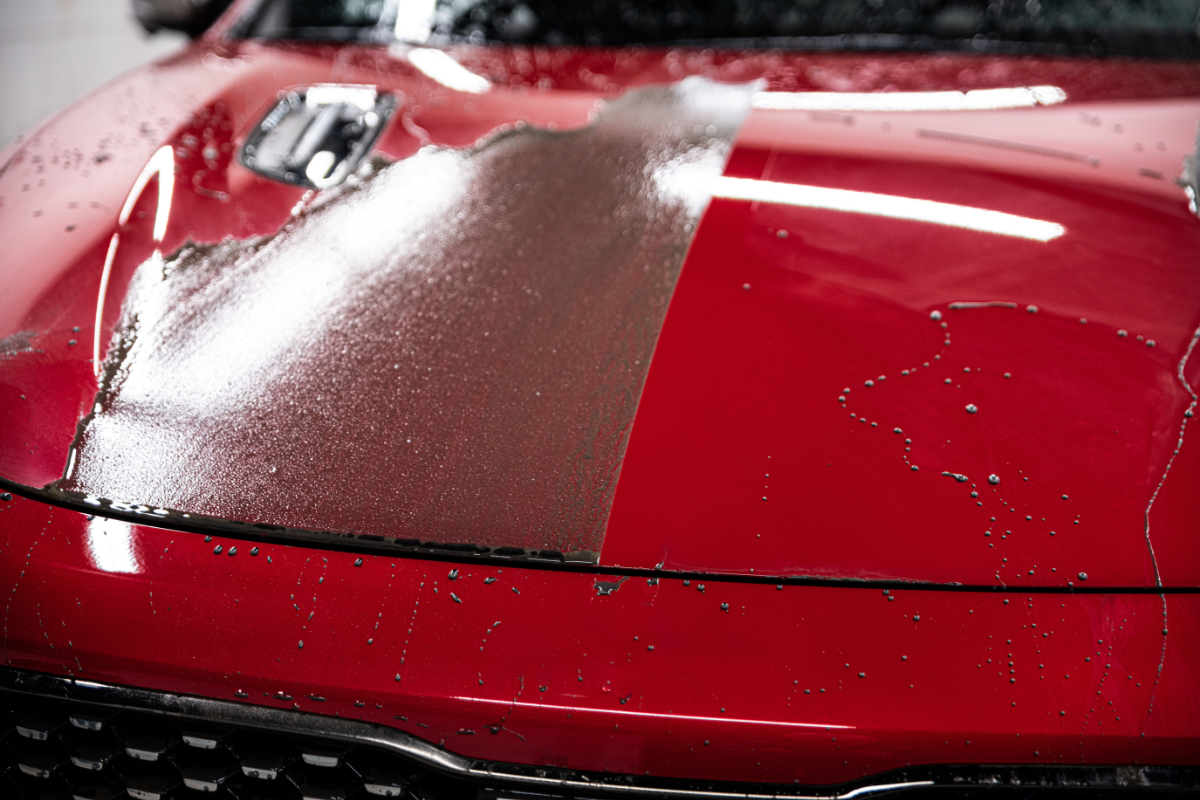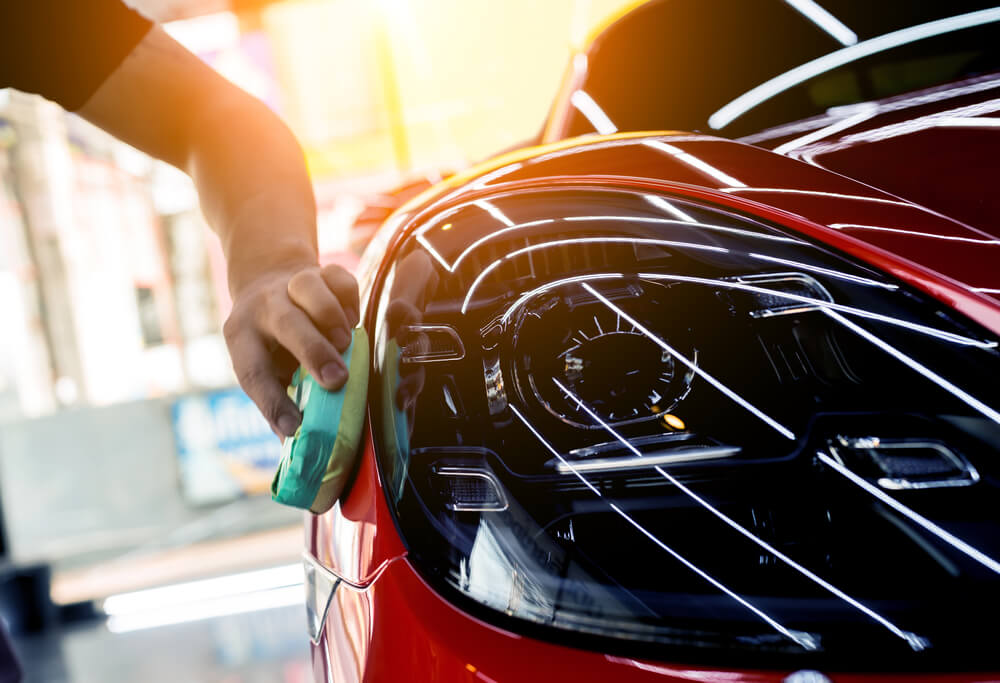Professional Tips for DIY Ceramic Coating Application at Home
Professional Tips for DIY Ceramic Coating Application at Home
Blog Article
The Significance of Ceramic Coating: Protecting Your Car's Outside With Precision
In an era where preserving the visual and functional honesty of your vehicle is critical, ceramic layer emerges as a critical remedy. With its unique bonding residential or commercial properties, ceramic finish supplies a level of security that much goes beyond traditional waxing techniques.
Advantages of Ceramic Coating
When it comes to preserving an automobile's aesthetic appeal, ceramic covering offers significant benefits. By creating a semi-permanent bond with the automobile's paint, ceramic finishings efficiently avoid oxidation and fading, ensuring that the car keeps a shiny, showroom-like surface for an extended period.
In addition to its protective qualities, ceramic covering provides amazing hydrophobic properties, triggering water and various other liquids to bead off easily. This feature streamlines the cleaning process, as dirt and particles are much less most likely to abide by the surface area, reducing the frequency and initiative needed for maintenance. Additionally, the finishing's resistance to chemical stains from acidic contaminants like bird droppings and tree sap is an additional significant benefit, decreasing prospective paint damages.
Ceramic coatings additionally enhance scrape resistance, supplying a layer that can soak up small abrasions and swirl marks. This characteristic is specifically helpful in maintaining a beautiful surface area, reducing the possibility of noticeable blemishes and preserving the stability of the car's paintwork in time.

How Ceramic Finishing Functions
Recognizing the mechanics behind ceramic finishing discloses its efficiency as a protective service for automobiles. Ceramic coatings are essentially liquid polymer applications that chemically bond with a cars and truck's manufacturing facility paint, creating a protective layer. This layer functions as a barrier versus ecological impurities such as dirt, ultraviolet, and crud rays, which can break down an automobile's exterior over time. The key part in ceramic covering is silicon dioxide (SiO2), which stems from quartz crystals and is known for its remarkable solidity and sturdiness.
Application of ceramic finish entails a careful procedure. Initially, the lorry's surface area need to be completely cleaned and sanitized to make sure optimal attachment. Once used, the liquid polymer forms a semi-permanent bond with the paint, hardening into a transparent, resilient shield. This shield improves the auto's gloss and hydrophobic properties, facilitating much easier cleaning by causing water and impurities to bead and slide off easily.
Furthermore, the layer's molecular structure supplies resistance to small scratches and chemical stains. Unlike waxes or sealers that rest on top of the paint, ceramic coverings integrate with the surface area, supplying lasting security. This assimilation is fundamental to its effectiveness, making sure the lorry's surface stays excellent for several years.
Comparing Ceramic Coating to Alternatives
In the world of auto defense, ceramic coating stands as a formidable option when compared to traditional alternatives such as sealants and waxes. While waxes offer a temporary lustrous finish, generally lasting just a couple of weeks to months, ceramic coverings offer a longer-lasting service, frequently enduring for many years. This toughness is credited to the chemical bonding that happens when ceramic finishes are used, developing a solid layer that is resistant to ecological threats.
Contrastingly, sealers, although even more resistant than waxes, still disappoint the robust defense used by ceramic finishings. Sealants can usually last for approximately a year, offering a synthetic guard against certain components. They lack the exceptional hydrophobic buildings and UV protection that ceramic finishes provide.
In addition, ceramic coverings use boosted scratch resistance, which neither waxes nor sealants can successfully match. In recap, while traditional waxes and sealants provide fundamental security, ceramic finishings offer a thorough, long-term solution that significantly improves and protects the automobile's exterior finish.
Application Refine Clarified
Applying ceramic finish to a lorry calls for a meticulous process to guarantee optimal results and resilience. The initial step involves thoroughly cleaning the vehicle's surface to remove dust, oil, and previous waxes. This is vital for making certain the layer sticks appropriately. A pH-neutral shampoo and a clay see this page bar treatment are frequently used to attain an immaculate surface area. When cleaned, the vehicle is dried out and brightened to get rid of any blemishes, as any kind of existing scratches or swirls can come to be a lot more noticable after the covering is used.
Adhering to surface prep work, the application of the ceramic coating starts. The covering is generally used in a climate-controlled environment to avoid dust bits from choosing the newly cleaned surface. Using an applicator pad, the ceramic layer is used in little areas to make certain also coverage. It is necessary to follow the supplier's standards relating to the appropriate treating time and application density.
After application, the coating needs a particular treating duration, throughout which the vehicle ought to be shielded from water and contaminants. This curing procedure can differ depending on the product however normally varies from 24 to 48 hours. Eventually, this thorough process is critical in accomplishing a glossy important site and resistant finish.
Maintenance Tips for Durability
To preserve the longevity of a ceramic finishing, adherence to a disciplined maintenance routine is crucial. Routine cleaning is critical; make use of a pH-neutral cars and truck shampoo and soft microfiber gloves to stay clear of abrasions. Prevent automatic cars and truck washes, as their extreme brushes can compromise the finishing's integrity. Rather, select a hand wash to make sure detailed yet gentle cleaning.
Post-wash, drying out the automobile with a clean microfiber towel avoids water areas that may deteriorate the coating over time. In addition, apply a ceramic covering booster every few months. These boosters enhance the hydrophobic residential or commercial properties and enhance the layer's safety abilities, ensuring it stays effective versus contaminants.
Bear in mind that parking locations play a crucial function in maintenance. ceramic coating. Whenever feasible, park in shaded areas to minimize UV direct exposure, which can gradually damage the finishing. For long-term storage, consider utilizing an automobile cover for included security versus ecological aspects
Conclusion
In final thought, ceramic covering offers as a crucial protective layer for car outsides, using long-lasting protection against ecological aspects such as grime, uv, and dirt rays. Comprehending the check these guys out application procedure and sticking to maintenance suggestions are important for making the most of the durability and performance of ceramic coating.
When it comes to preserving a cars and truck's visual charm, ceramic layer offers significant advantages. By creating a semi-permanent bond with the automobile's paint, ceramic coatings efficiently stop oxidation and fading, making sure that the auto maintains a glossy, showroom-like surface for an extended period. Ceramic finishes are basically fluid polymer applications that chemically bond with an automobile's manufacturing facility paint, producing a safety layer. In recap, while typical waxes and sealants supply basic protection, ceramic coatings provide a comprehensive, long-term remedy that considerably protects the vehicle and improves's exterior coating.

Report this page